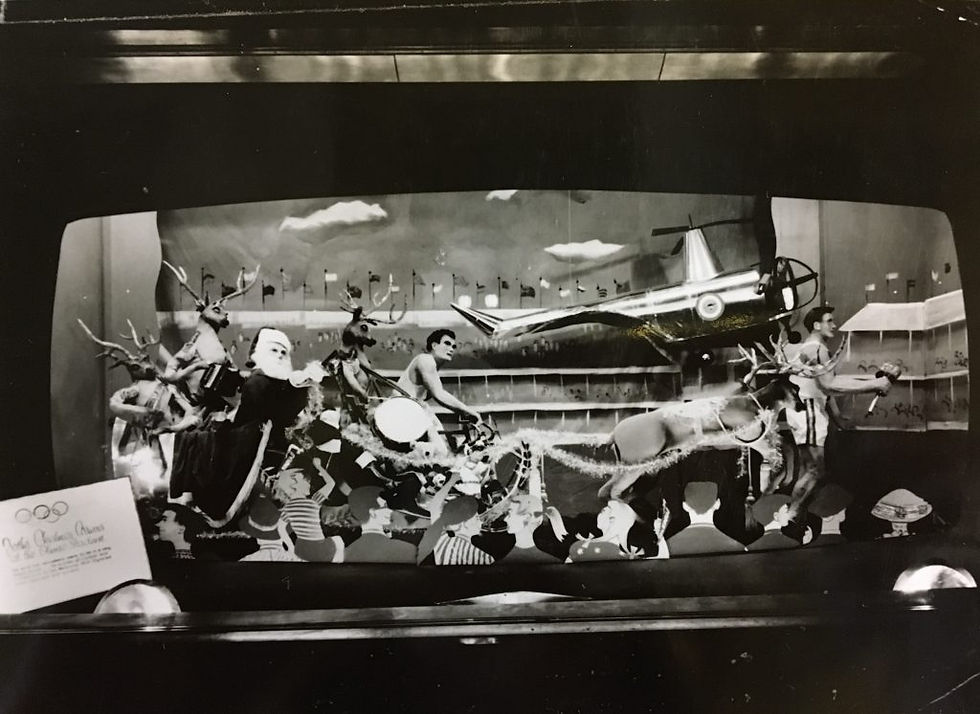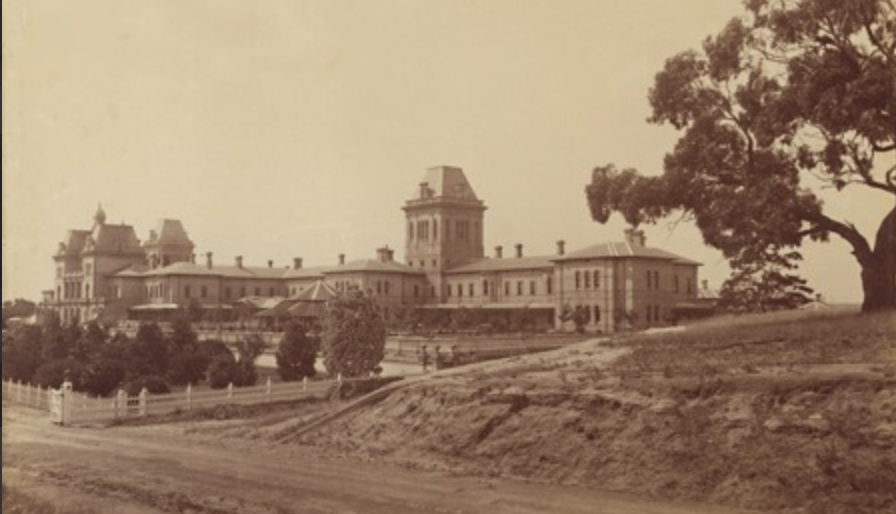The artistry of the Myer Christmas Windows: Why this Melbourne tradition still means so much
- Andrew McIlroy
- Nov 30, 2023
- 5 min read
Updated: Dec 2, 2023

On a rainy December morning a few years back now, a queue of people was forming along a bustling early morning Bourke Street Mall. For most Melburnians the 'Myer Christmas Windows' hold a special place in their hearts, turning up in their multitudes each year. But at a time in our history defined by rising religious and racial intolerance and violence in all its terrifying forms, it may seem indulgent or perhaps naive to seek out such a festive display, thinking only of gift-giving, carols and yuletide and not what this season may mean to those of differing backgrounds, experiences and faiths or no faith who do not share in Christmas and its traditions.
But the Myer Christmas Windows always in my mind manage to navigate their way through this maze, despite the glare of ever-circling grinches masquerading as social commentators and activists calling for an end to Christmas as we know it in the name of diversity and inclusiveness on the one hand, or neo-cons who see any secular incursion as a continuation of the ‘War of Christmas’ on the other.
And while we are all-too-familiar with the polemics of art in our galleries and public spaces, from large scale exhibitions to immersive digital projections, often the most engaging artistic displays are less aspiring, providing the simplest of pleasures, and in turn the most poignant of messages.

The Myer Christmas Windows, Melbourne (2019) Photo: Herald Sun
As I made my way through the commited crowd, I finally came upon the large paned windows smudged by children’s hands and faces pressed up so close and as high as they can manage. In each delighting scene I saw intricately adorned marionettes, snow-covered castles, and airborne reindeer carrying Santa and his elves across oceans, forests and city rooftops. I could almost smell the freshly baked gingerbread and touch the shiny candy cane hanging tantalisingly from the glittering pine trees.
I recall growing up in Melbourne that Christmas didn’t quite feel like Christmas without a trip to the city to stand in awe at the window displays. I fondly recall being filled with excitement and anticipation of what new magical animations would be unveiled.
The Myer Christmas Windows have continued as a much-loved part of Melbourne now for 68 years, with this year’s display bringing to life the ABC’s pre-school story of Bluey’s Christmas with both original and recreated scenes from the Heeler’s holidays, a storyline that falls very much within the Myer Christmas Windows tradition of adapted fabling.
The Christmas windows were the creation of Fred Asmussen (1913-1974), who started his long career at the Myer Emporium in 1928 as a ‘wheeler boy’, moving goods throughout the store in a wicker cart.
With an emerging talent for visual merchandising Asmussen by 1939 was put in charge of the Bourke Street windows. Before the refurbishment of the Myer Bourke Street facade in the 1950’s the windows were island windows, with arcades flowing between each window. Asmussen dressed 24 - 26 windows, which were sometimes changed twice a week.

The Myer Emporium, Melbourne c1930 Photo: State Library Victoria

Myer's Bourke Street store in Melbourne in the late 1950s Photo: Herald Sun
In 1956 Asmussen convinced Myer management to allow him to create a grand Christmas display – where the use of merchandise was minimal – a bold idea with Christmas a prime selling time for retailers. Inspired by the Summer Olympics which Melbourne had hosted that year, the first ever to be televised on black and white television in Australia, Asmussen’s first theme was 'Santa and the Olympics'.
The response to the windows was overwhelming, and Asmussen was given a substantial budget and the task of creating a series of six windows for the following November. Asmussen who had formerly studied ballet chose ‘The Nutcracker’ as the theme for 1957, followed by 'Aladdin' for 1958, and 'Fairy Tales' for 1959.
Each year brought ever bigger crowds to the windows, delighted by the wonder that Asmussen’s ingenious creations inspired. Current world events often influenced the theme – in 1962 the theme was 'Santa goes to Space', with Santa appearing in a silver space suit and perspex bubble helmet. (Kylie Best, ‘The Myer Christmas Windows’, Social Life and Customs, State Library Victoria, 19 December 2018)

Fred Asmussen (c1960) Photo: State Library Victoria
Australian writers and illustrators too were celebrated. I fondly remember as a young child in 1976 the revealing of Peg Maltby’s illustrated fairy tales, sparking my life-long love of drawing. In 1995, the theme was May Gibb’s 'Gumnut Babies'.
The planning, design and execution would take the entire year, and required the skills of dozens of carpenters, engineers, artists, scenery makers, costume designers and sound technicians.
In the early days of the Christmas windows improvisation was common not only to create the sets and individual elements for the windows, but to enable movement. Chicken wire, paper mache, spun glass, clay, hidden magnets, a windscreen wiper – even a washing machine might be pulled apart to use the motor to drive the moving mechanisms. Melbourne City Council gardeners were asked to keep the branches and twigs from the trees they pruned, and junior Myer staff were tasked with hauling them back to the store, sometimes on the tram. (Kylie Best)

'Santa and the Olympics' (1956) Photo: Lloyd Hull, Myer archive

'Famous Fairytales' (1959) – ‘Cinderella’ Photo: Myer archive

'Alice in Wonderland' (1961) Photo: 'They call him King Midas', The Australian Women's Weekly, May 1967

Peg Maltby’s 'Fairy Tales' (1976) Photo: 'Spreading the festive spirit', The Australian Women's Weekly November 1976
Attention to detail was pain-staking. The Babes in the Wood window for the Fairy Tales theme in 1959 included a carpet floor of 1,500 leaves which were dried, pressed, each painted gold and sprinkled with glitter. Asmussen was uncompromising in the realisation of his artistic vision.
Asmussen designed every Myer Christmas window display until his death in 1974. He was remembered as a man of incredible artistry and energy – the driving force behind what has become a cherished Melbourne Christmas institution. (Kylie Best)
Indeed, Asmussen can be credited with creating one of Melbourne’s first and undoubtably longest running public art installations - complete with an exquisite Nativity Scene set in the final window (of course, not compulsory viewing) - that truly transcends our daily squabbles and partisan debates.
I still look forward each November with a rather childlike excitement I must confess to the Myer Christmas Windows.
No doubt this year I will pause, in a world going mad it seems, to reflect on just why they still mean so much.

Bluey's Christmas, Myer Christmas Windows (2023) Photo: ABC
Main Photo: The Myer Christmas Windows, Penny Stephens (Photographer), The Age, 1 October 2020
Andrew McIlroy is an artist and writer, living and working in Melbourne, Australia



Comments